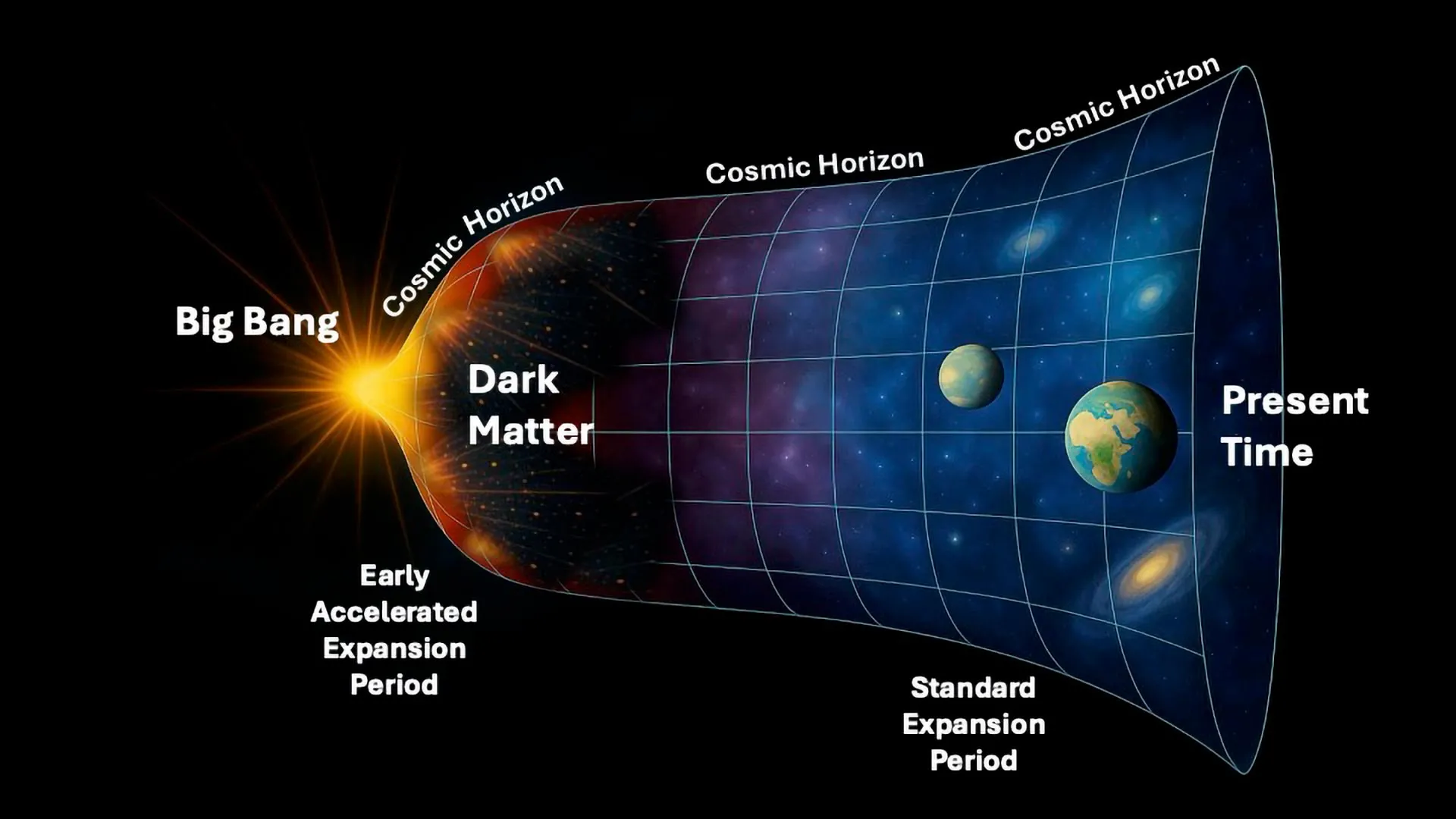
Applying to KAUST - Your Complete Guide for Masters & Ph.D. Programs (Upcoming Admissions)
Admissions Overview & Key Requirements

For decades, scientists have grappled with one of the most profound enigmas in cosmology: dark matter. This invisible substance, estimated to make up roughly 80% of all matter in the universe, is crucial for explaining why galaxies hold together and how large-scale cosmic structures formed. Yet, its fundamental nature and origin remain elusive. Now, Professor Stefano Profumo, a theoretical physicist at the University of California, Santa Cruz (UCSC), has proposed two innovative theories suggesting that dark matter may have emerged naturally from the extreme conditions of the early universe.
Profumo's most recent publication, released on July 8, delves into the concept of the "mirror world" that coexists with our visible universe. This speculative realm would possess its own distinct set of particles and fundamental forces, operating independently from our known particles and forces, making it inherently invisible to us. Crucially, this shadow sector would still obey many of the same underlying physical laws as our own cosmos.
The inspiration for this idea comes from Quantum Chromodynamics (QCD), the well-understood theory that describes the strong nuclear force responsible for binding tiny particles called quarks together inside protons and neutrons. In Profumo's new work, he postulates that a similar strong force, dubbed "dark QCD," could exist within this hidden sector. This "dark QCD" would involve its own fundamental constituents: dark quarks and dark gluons. Just as their ordinary counterparts do in our universe, these dark particles would bind together to form heavier, composite particles known as dark baryons.
The theory suggests that under specific, incredibly dense conditions in the very early universe, these dark baryons could have accumulated enough mass to collapse under their own immense gravity. This collapse would have led to the formation of extremely small, stable black holes. These "black hole-like remnants" would be minuscule, perhaps only a few times heavier than the Planck mass – the fundamental scale of quantum gravity. If produced in the right abundance during that primordial era, these tiny, dark black holes could collectively account for the entirety of the dark matter observed in the universe today. Their sole interaction with ordinary matter would be through gravity, explaining why they remain completely undetected by particle accelerators and other direct search experiments, yet their gravitational influence is essential for galaxy formation and cosmic structure on the largest scales.
Profumo's other study, published in May, explores an alternative mechanism for dark matter production: its gravitational creation near the rapidly expanding cosmic horizon of the early universe. This concept draws an analogy to the event horizon of a black hole.
The central question posed is whether, if the universe underwent a brief but intense period of accelerated expansion after the initial cosmic inflation – an expansion faster than radiation or normal matter would typically allow, though less extreme than inflation itself – this phase could have "radiated" particles into existence. This idea is directly inspired by the phenomenon of Hawking radiation, where quantum effects near a black hole's event horizon are theorized to produce thermal radiation.
Using sophisticated principles from quantum field theory in curved spacetime, Profumo's research demonstrates that such a mechanism could indeed generate dark matter particles. Importantly, this process is purely gravitational. The resulting dark matter particles could have a wide range of masses, dependent on the temperature and duration of this specific post-inflationary expansion phase. A key advantage of this theory is that it does not require any prior assumptions about how dark matter interacts with ordinary matter; it only mandates that the dark matter particles are stable and were produced gravitationally. In essence, the universe's rapid growth itself acts as a cosmic generator, giving rise to these elusive particles from the very fabric of spacetime.
"Both mechanisms are highly speculative, but they offer self-contained and calculable scenarios that don't rely on conventional particle dark matter models, which are increasingly under pressure from null experimental results," explained Professor Profumo, who also serves as deputy director for theory at the Santa Cruz Institute for Particle Physics.
By offering coherent, testable frameworks that diverge from widely-assumed interaction properties for dark matter, Professor Profumo's research provides fresh avenues in the scientific quest to unravel one of the cosmos's most profound and persistent mysteries. Both studies were featured in Physical Review D, the American Physical Society's premier journal for theoretical particle physics.
Share

Applying to KAUST - Your Complete Guide for Masters & Ph.D. Programs (Upcoming Admissions)
Admissions Overview & Key Requirements

Erasmus Mundus Joint Master's 2026 (Upcoming Admissions)
Erasmus Mundus programs are scholarships available to students worldwide, offering fully-funded Master’s degrees to study in Europe!

Registration Opens for SAF 2025: International STEAM Azerbaijan Festival Welcomes Global Youth
The International STEAM Azerbaijan Festival (SAF) has officially opened registration for its 2025 edition!

KAIST International Graduate Admissions Spring 2026 in Korea (Fully Funded)
Applications are open for KAIST International Admissions for Master’s, Master’s-PhD Integrated, Ph.D., and Finance MBA

Young Leaders Union Conference 2025 in Paris (Fully Funded)
Join Global Changemakers in Paris! Fully Funded International Conference for Students, Professionals, and Social Leaders from All Nationalities and Fields

An mRNA cancer vaccine may offer long-term protection
A small clinical trial suggests the treatment could help keep pancreatic cancer from returning